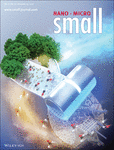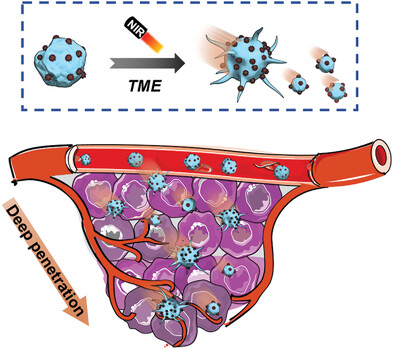Journal list menu
Export Citations
Download PDFs
Cover Picture
Rotating Cylinder-Assisted Nanoimprint Lithography for Enhanced Chemisorbable Filtration Complemented by Molecularly Imprinted Polymers (Small 52/2021)
- First Published: 29 December 2021

Nanoimprint Lithography
In article number 2105733, Jinyoung Park, Suck Won Hong, and co-workers report a rotating cylindrical stamp-based nanoimprint lithography that enables direct pattern transfer of molecularly imprinted polymers (MIPs) on a fabric substrate. Nanopatterned functional MIPs serve as self-encoded filtration media for the selective separation of formaldehyde molecules, which would be highly useful for designing next-generation separation systems with the ability to capture industrial or household toxic substances.
Inside Front Cover
A Facile Approach for Elemental-Doped Carbon Quantum Dots and Their Application for Efficient Photodetectors (Small 52/2021)
- First Published: 29 December 2021

Photodetectors
The cover image describes the design of three-electrode photo-electrochemical photodetectors based on lanthanide-doped carbon quantum dots (CQDs). Owing to the coordination of lanthanides and internal energy transfer between lanthanides and CQDs, the as-fabricated photodetectors not only show an excellent photo-response performance, but also exhibit a narrow-band response behavior. More information can be found in article number 2105683 by Lingfeng Gao, Hans Ågren, Han Zhang, and co-workers.
Inside Back Cover
Handheld Microfluidic Filtration Platform Enables Rapid, Low-Cost, and Robust Self-Testing of SARS-CoV-2 Virus (Small 52/2021)
- First Published: 29 December 2021
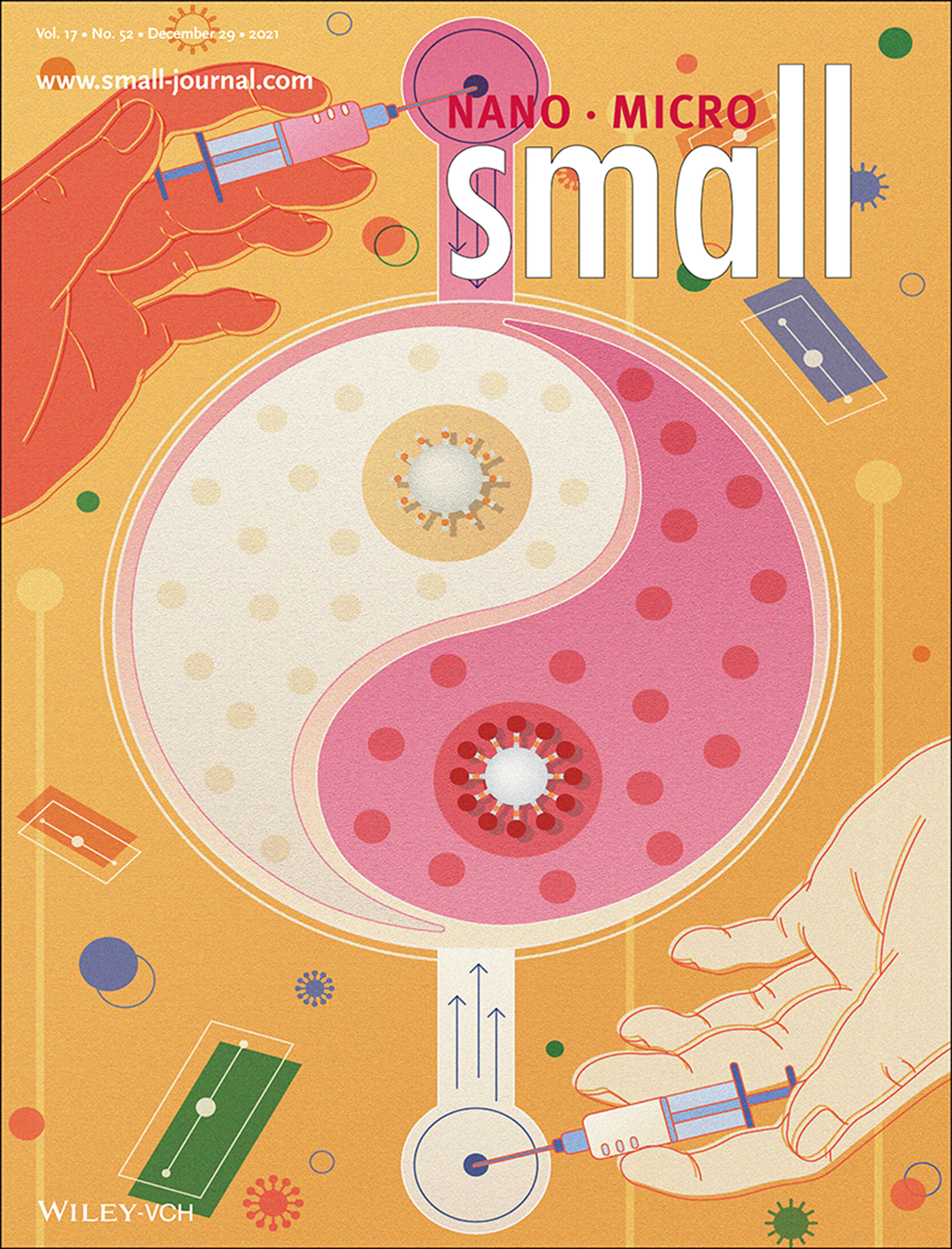
COVID-19 Diagnostics
In article number 2104009, Jiang Xu, Yan Zhang, Taotao Lao, and co-workers present a handheld microfluidic filtration platform that enables rapid, low-cost and robust self-testing of the SARS-CoV-2 virus. The cover design emphasizes its important advantages: (1) Equipment-free handheld injection, represented by the hands manipulation; (2) Visible and easy readout: a Taichi diagram is used to distinguish the negative/positive results, which is in line with the meaning of Taichi (Yin/Yang) in traditional Chinese culture. The Taichi eyes are filled with illustrational structures of negative/positive nanocomplexes; (3) Reusable chips: the flow arrows at both inlet and outlet indicate that the chip can be repeatedly cleaned and injected.
Back Cover
Fabrication of Multiresponsive Magnetic Nanocomposite Double-Network Hydrogels for Controlled Release Applications (Small 52/2021)
- First Published: 29 December 2021

Nanocomposite Double-Network Hydrogels
A multi-responsive magnetic nanocomposite double-network hydrogel is developed for controlled protein delivery in article number 2105997 by Cheng-Hsun Lu and Yi-Cheun Yeh. Proteins are rapidly released from the hydrogel network at acidic pH and high temperature. This study provides a new strategy for hydrogel design to present multi-stimuli responsiveness for biomedical applications.
Masthead
Reviews
Fiber Surface/Interfacial Engineering on Wearable Electronics
- First Published: 21 August 2021
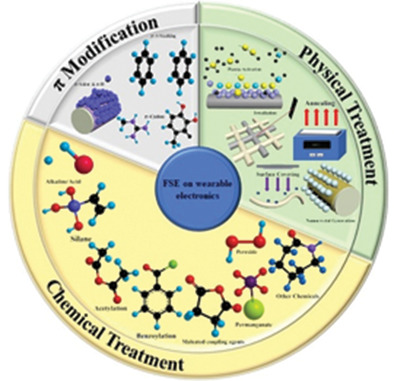
A horizon scanning of the surface modification techniques for fiber materials and their application in wearable electronics is offered. Apart from the general physical and chemical treatments, a new approach of self-assembly via π–π stacking is included for the first time. The scoped techniques are expected to shed light on the rational design of future fiber based wearable electronics.
All-in-One Nanomedicine: Multifunctional Single-Component Nanoparticles for Cancer Theranostics
- First Published: 24 September 2021
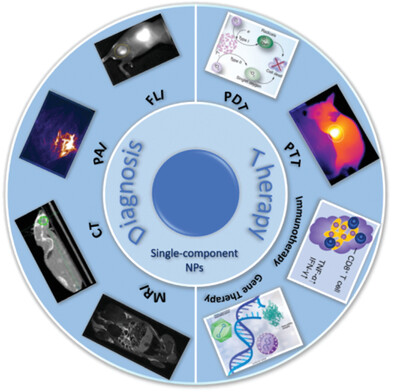
The development of cancer diagnostic imaging and treatment is a major concern worldwide. This review systematically summarizes the recent progress of multifunctional single-component nanoparticles in the applications of cancer theranostics. The structure design, categories of nanoparticles, targeted strategies, biomedical applications, potential barriers, challenges, and prospects for the future clinical practice of this rapidly growing field are discussed.
Advances and Prospects in Metal–Organic Frameworks as Key Nexus for Chemocatalytic Hydrogen Production
- First Published: 15 August 2021
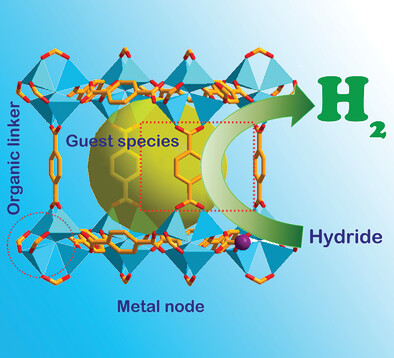
Recent developments of MOFs as catalysts for chemocatalytic hydrogen production are comprehensively summarized. The importance of this field and the merits of MOFs as heterogeneous catalysts are delineated. The characterization of MOF-based catalysts and the mechanism of chemocatalytic hydrogen production involving MOF-based catalysts are of specific concern. Finally, future prospects with remaining challenges are suggested.
Small-Molecule Prodrug Nanoassemblies: An Emerging Nanoplatform for Anticancer Drug Delivery
- First Published: 03 August 2021
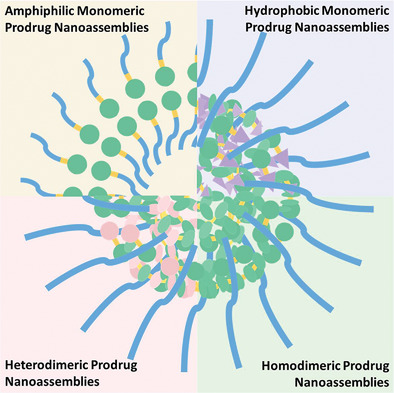
Recent trends in small-molecule prodrug nanoassemblies (SMP-NAs) are outlined, and the corresponding self-assembly mechanisms are discussed in detail. Besides, the smart stimuli-responsive SMP-NAs and the combination therapy based on SMP-NAs are summarized, with special emphasis on the structure–function relationships. Finally, the outlooks and potential challenges of SMP-NAs in cancer therapy are highlighted.
Research Articles
Rotating Cylinder-Assisted Nanoimprint Lithography for Enhanced Chemisorbable Filtration Complemented by Molecularly Imprinted Polymers
- First Published: 02 December 2021
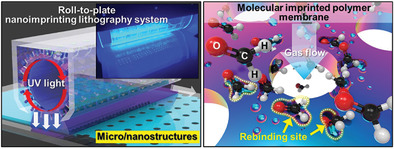
Simple integration of UV-optical engine for the cylinder roll-assisted nanoimprinting process is presented to enable high-throughput pattern transfer, especially on fabric substrates. This approach involves the use of molecularly imprinted polymers to spatially construct free-standing perforated micro/nanostructures with functions that can serve as a self-encoding filtration medium for the selective separation of formaldehyde molecules.
A Facile Approach for Elemental-Doped Carbon Quantum Dots and Their Application for Efficient Photodetectors
- First Published: December 29, 2021
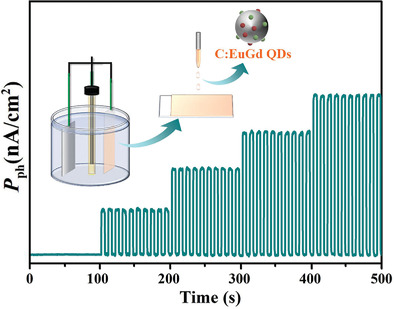
Lanthanide-doped carbon quantum dots (CQDs) synthesized by a facile hydrothermal approach are directly used as active materials for photo-electrochemical type photodetectors. The strong coordination of lanthanides can enhance the light absorption, while the internal energy transfer between lanthanides and CQDs can improve the photo-response performance. Moreover, the specific excitation region of lanthanides endows the doped CQDs narrow-band response properties.
Handheld Microfluidic Filtration Platform Enables Rapid, Low-Cost, and Robust Self-Testing of SARS-CoV-2 Virus
- First Published: 30 November 2021
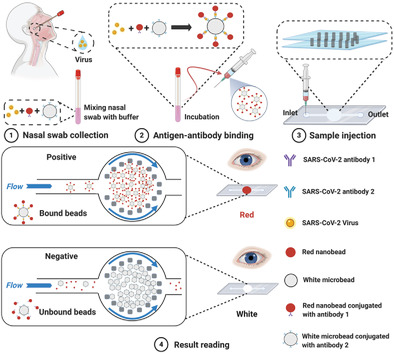
The microfluidic diagnostic platform combining sandwich immunoassay and hydrodynamic filtration described here enables rapid detection of severe acute respiratory syndrome coronavirus 2 (SARS-CoV-2). The nano- and micro- beads are coated with antibodies targeting nucleocapsid proteins. Microfluidic filtration discards free nanobeads but retains antigen-bridged complexes in the observation zone, where a display of red/white color indicates the positive/negative result.
Rising Stars
Fabrication of Multiresponsive Magnetic Nanocomposite Double-Network Hydrogels for Controlled Release Applications
- First Published: 17 November 2021
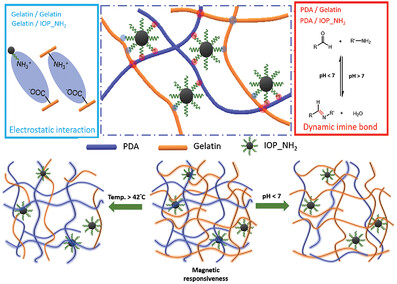
A new type of magnetic nanocomposite double-network (ncDN) hydrogels is developed through co-engineering the polymer–polymer and polymer–nanoparticle interfaces with dynamic bonds (i.e., hydrogen bonding, electrostatic interactions, and dynamic imine bonds). The microstructure, rheological manner, mechanical property, stimuli-responsiveness, and controlled release application of the ncDN hydrogels are systematically investigated.
Investigating Time-Dependent Active Motion of Janus Micromotors using Dynamic Light Scattering
- First Published: 15 October 2021
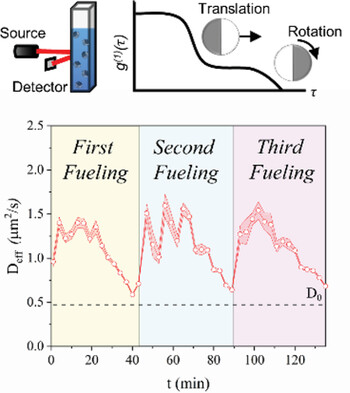
In this work, the non-steady state active motion of Janus micromotors (JM) as a function of fuel concentration, JM concentration, and time after fuel addition is studied. Characterization by dynamic light scattering and the analyses presented provide new insights into the mechanism of active motion in non-steady state systems.
Increasing the Energy Gap between Band-Edge and Trap States Slows Down Picosecond Carrier Trapping in Highly Luminescent InP/ZnSe/ZnS Quantum Dots
- First Published: 11 October 2021
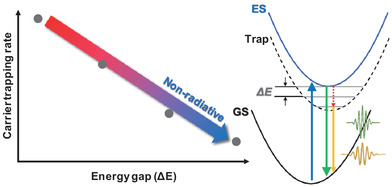
In InP/ZnSe/ZnS quantum dots with near-unity luminescence, carrier trapping into shallow defects at a picosecond timescale is a key mechanism to reduce the quantum yield. The carrier trapping assisted by ZnSe phonons can slow down with increasing the energy gap between the band-edge and shallow trap states.
A Comparison of Solid Electrolyte Interphase Formation and Evolution on Highly Oriented Pyrolytic and Disordered Graphite Negative Electrodes in Lithium-Ion Batteries
- First Published: 30 October 2021
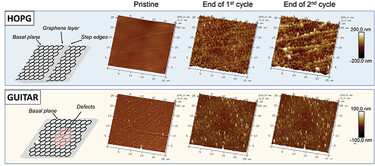
The formation and evolution of solid electrolyte interphase (SEI) on graphite with and without structural defects are investigated using operando electrochemical atomic force microscope, ex situ X-ray photoelectron spectroscopy and density functional theory calculations. Structural defects affect the graphite inducing formation of a uniform, denser, thinner, and more passivating SEI. The SEI on graphite with defects is enriched in LiF.
Atomistic Mechanics of Torn Back Folded Edges of Triangular Voids in Monolayer WS2
- First Published: 27 October 2021
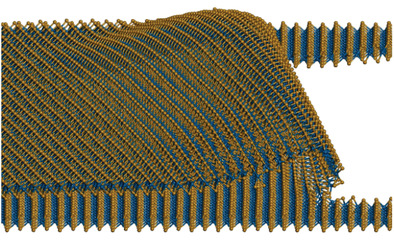
Combining atomic-resolution images from annular dark-field scanning transmission electron microscopy with reactive molecular modelling, it is revealed that the folding edge formation has statistical preferences under geometric conditions based on the orientation mismatch. It is further investigated how loading directions and strong interlayer friction, interplay with WS2 lattice's crack preference, govern the deformation and fracture pattern around folding edges.
Porous Ga2O3 Nanotubes Derived from Urease-Mediated Interfacially-Grown NH4Ga(OH)2CO3 for High-Efficient Hydrogen Evolution
- First Published: 02 November 2021

A novel biological strategy via NH4Ga(OH)2CO3 nanotube intermediate is presented for fabrication of Ga2O3 nanotube. All species from urea enzymolysis are subtly used for the interfacial growth of NH4Ga(OH)2CO3 nanotube in aqueous solution of gallium salts at 20–50 °C, and the balance between the rate of CO2 bubble fusion and NH4Ga(OH)2CO3 precipitation is the key point.
Pt Edge-Doped MoS2: Activating the Active Sites for Maximized Hydrogen Evolution Reaction Performance
- First Published: 28 October 2021
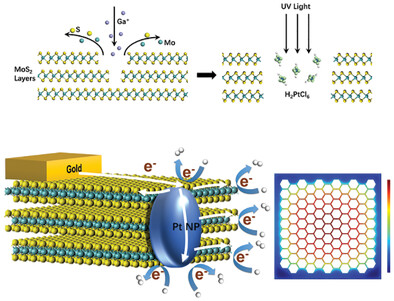
Tunable Pt edge-doped MoS2 electrocatalysts are fabricated by focused ion beam etching and photoreduction techniques for enhanced hydrogen evolution reaction activity with less consumption of Pt. Impressive high performance is obtained from the synergistic effect between Pt nanoparticles (NPs) and edge active sites, as well as the increased potential near edges.
Structure and Charge Regulation Strategy Enabling Superior Cyclability for Ni-Rich Layered Cathode Materials
- First Published: 08 October 2021
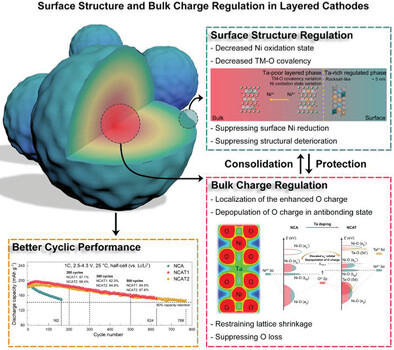
Surface structure and bulk charge are regulated by introducing high-valence Ta5+ ions for achieving stable and safe cathodes toward high-energy Li-ion batteries. The critical roles of the structure and charge regulation in improving structural stability are revealed, providing a novel and integrated insight into the functional mechanisms of high-valence ions substitution in Ni-rich cathodes.
Spiropyran-Appended Cucurbit[6]uril Enabling Direct Generation of 2D Materials inside Living Cells
- First Published: 11 October 2021
![Spiropyran-Appended Cucurbit[6]uril Enabling Direct Generation of 2D Materials inside Living Cells](/cms/asset/5b37a6bc-004e-463d-bf08-07d6f46734e2/smll202102392-gra-0001-m.jpg)
A spiropyran-appended cucurbit[6]uril is designed, and demonstrated to be able to translocate into cytosol, followed by lateral polymerization to yield a large 2D material that exceeds the size limit allowed by endocytic uptake pathway. With this advance, 2D platforms for intracellular signaling or theranostics that displays potency beyond conventional, small, endocytosable counterparts are in sight.
X-Ray Spectromicroscopy Investigation of Heterogeneous Sodiation in Hard Carbon Nanosheets with Vertically Oriented (002) Planes
- First Published: 15 October 2021
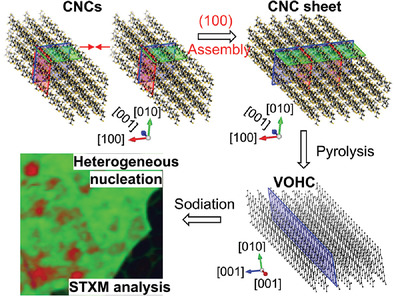
Hard carbon nanosheets with vertically oriented (002) planes are synthesized and used as a model hard carbon to investigate the sodiation phase transformation by synchrotron X-ray spectromicroscopy. The results for the first time unveil the heterogeneous nature of sodiation in hard carbon and highlight the importance of increasing nucleation sites to enhance performance.
Lightweight, Thermally Conductive Liquid Metal Elastomer Composite with Independently Controllable Thermal Conductivity and Density
- First Published: 01 November 2021
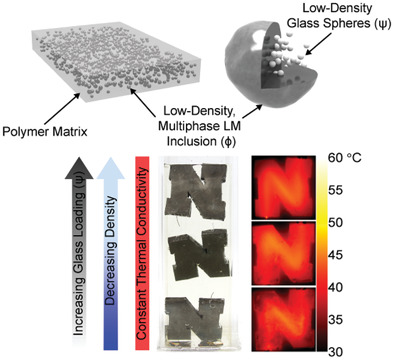
A new liquid metal elastomer composite architecture is reported with independently controllable thermal conductivity and density. Quantitative design maps that describe the relationship between composite and filler properties reveal new strategies to enhance material and functional properties. A lightweight inclusion with a low-density phase resulted in a significant decrease in density with only a modest decrease in thermal conductivity.
Injectable Immunotherapeutic Thermogel for Enhanced Immunotherapy Post Tumor Radiofrequency Ablation
- First Published: 02 November 2021

An injectable immunotherapeutic thermogel is developed to improve the phagocytic ability of antigen presenting cells to tumor debris and damage-associated molecular patterns released after tumor radiofrequency ablation (RFA) via inhibiting rho-associated kinases signal pathway. Such strategy remarkably prolongs the survival of mice after RFA treatment, showing great potential for clinical translation as an improvement strategy for RFA.
A Ratiometric Fluorescent Conjugated Oligomer for Amyloid β Recognition, Aggregation Inhibition, and Detoxification
- First Published: 27 October 2021
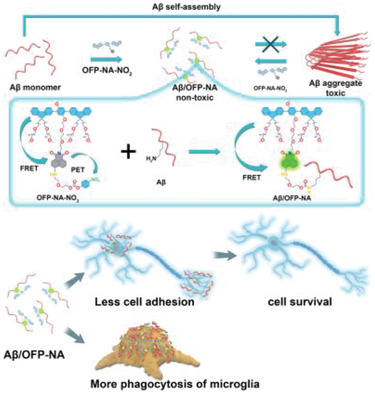
The new ratiometric fluorescence probe OFP-NA-NO2 can sense amyloid β (Aβ) and inhibit the formation of Aβ aggregates by covalent binding. Also, this probe can effectively down-regulate the level of TNF-α and restore the Aβ-clearing ability of microglia, thereby alleviating the neurotoxicity of Aβ aggregates. This work offers a promising strategy for early diagnosis and treatment of neurodegenerative diseases.
Bright Electroluminescent White-Light-Emitting Diodes Based on Carbon Dots with Tunable Correlated Color Temperature Enabled by Aggregation
- First Published: 02 November 2021
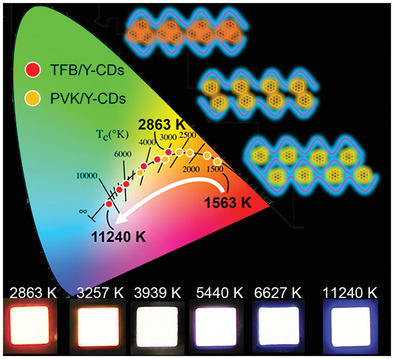
A series of warm white, pure white, and cold white electroluminescent carbon dots light-emitting diodes (CDs-LEDs)is successfully demonstrated through controlling aggregation degrees of CDs. These CDs-LEDs exhibit adjustable correlated color temperatures (2863–11240 K) in sequence along the blackbody radiation curve and reach maximum brightness and external quantum efficiency upto 1414–4917 cd m−2 and 0.08–0.87%, respectively.
Thrombin Based Photothermal-Responsive Nanoplatform for Tumor-Specific Embolization Therapy
- First Published: 02 November 2021
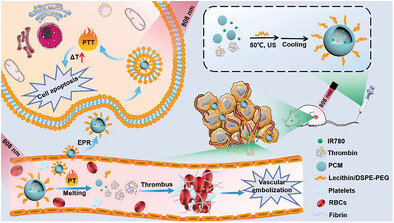
A nano-carrier based on phase-change materials is constructed to achieve the safe intravenous injection and controllable release of thrombin through a simple method. The smart nano-carrier-induced tumor-vascular infarction improved the therapeutic specificity and efficacy of coagulation-based tumor therapy.
Ion-Conductive Hydrogel-Based Stretchable, Self-Healing, and Transparent NO2 Sensor with High Sensitivity and Selectivity at Room Temperature
- First Published: 20 October 2021
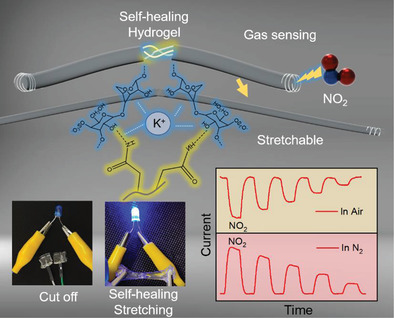
An intrinsically stretchable, self-healing, transparent, and ion-conductive hydrogel is utilized to fabricate NO2 gas sensors. The sensing mechanism reveals that the redox reaction of NO2 at the electrode–hydrogel interface induces current variation. The sensor exhibits high sensitivity (119.9%/ppm), ultralow limit of detection (86 ppt), good selectivity. Meanwhile, it can operate in both anaerobic and aerobic environments at room temperature.
Mass Transfer in Boronate Ester 2D COF Single Crystals
- First Published: 28 October 2021
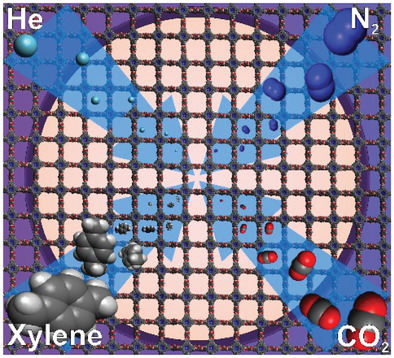
A single-crystalline 2D covalent organic framework is studied with respect to permeation of gaseous and vaporous substances. The free-standing material is demonstrated to be open for molecular effusion due to an unprecedentedly high pore density. At the same time, the structure of the 2D membrane is found to enable surface diffusion of condensable species.
The Dehydrogenation of H-S Bond into Sulfur Species on Supported Pd Single Atoms Allows Highly Selective and Sensitive Hydrogen Sulfide Detection
- First Published: 29 October 2021
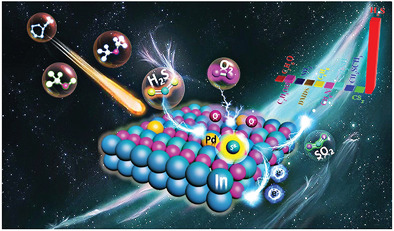
The effect of supported Pd single atoms on H2S gas sensing behavior is investigated by combing density functional theory calculations with quasi in situ XPS analysis. The dehydrogenation of HS bonds into sulfur species on Pd atomic sites is a main cause for such H2S sensing signal. A sensing model for H2S on supported Pd atomic sites is proposed.
Rationalizing Surface Electronic Configuration of Ni–Fe LDO by Introducing Cationic Nickel Vacancies as Highly Efficient Electrocatalysts for Lithium–Oxygen Batteries
- First Published: 28 October 2021
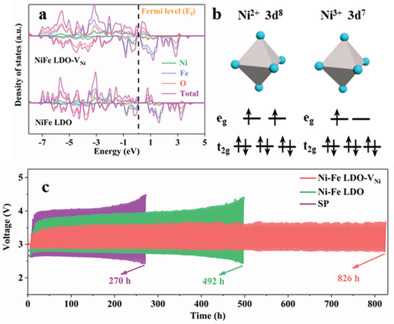
The Ni–Fe LDO-VNi enriched with nickel vacancies is successfully prepared by selective etching method. The existence of nickel cationic vacancies can promote the formation of abundant Ni3+ (t2g6eg1) with the optimized electron filling of eg, which makes the Ni–Fe LDO-VNi based electrode have a superior long term cyclic stability for Li–O2 battery.
General In Situ Photoactivation Route with IPCE over 80% toward CdS Photoanodes for Photoelectrochemical Applications
- First Published: 01 November 2021
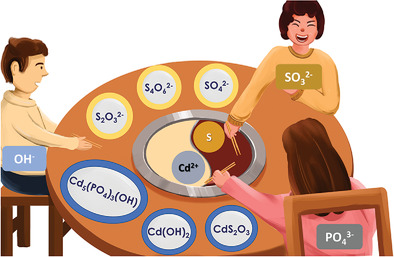
A facile yet powerful surface engineering strategy by in situ photoactivation is proposed to CdS photoanodes. This approach reduces surface charge recombination through the formation of thiosulfate ion and forms a uniform nanoporous morphology via dissolving Cd2+ with phosphate ions on the surface. The resultant photoanodes present significantly prompted performance for photoelectrochemical application.
Valence Band Structure Engineering in Graphene Derivatives
- First Published: 27 October 2021
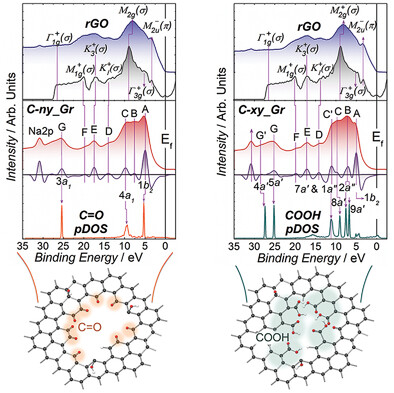
The engineering of the graphene's valence band upon the chemical derivatization by ketones and carboxyls is shown. The appearance of a set of localized states related to molecular orbitals of the introduced functionalities is signified. An empirical approach for the analysis and prediction of the impact of a certain functional group on the graphenes’ electronic structure is stated.
In Situ Electrochemical Activation Derived LixMoOy Nanorods as the Multifunctional Interlayer for Fast Kinetics Li-S batteries
- First Published: 12 November 2021
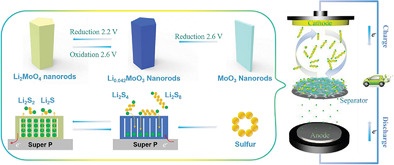
LMO/SP/NF interlayer brings about a new catalytic strategy based on the original proposed lithiation/delithiation behavior triggered by overpotential driving force. This behavior allows the Li+ from the dissociated LiPSs species to diffuse on both the surface and bulk channels in the catalysts and thus accelerate the Li-S reaction kinetics.
In Situ Replacement Synthesis of Co@NCNT Encapsulated CoPt3@Co2P Heterojunction Boosting Methanol Oxidation and Hydrogen Evolution
- First Published: 05 November 2021

A sea urchin-shaped Co2P/Co@NCNT is synthesized, which not only acts as metal anchoring carrier, but also provides an efficient three-phase region. Subsequently, the metal cobalt is replaced by Pt NPs through in situ substitution reaction to form CoPt3 alloy connected with Co2P and encapsulated in NCNT ensuring good dispersion, exposing more active sites, and regulating the surface electronic structure.




